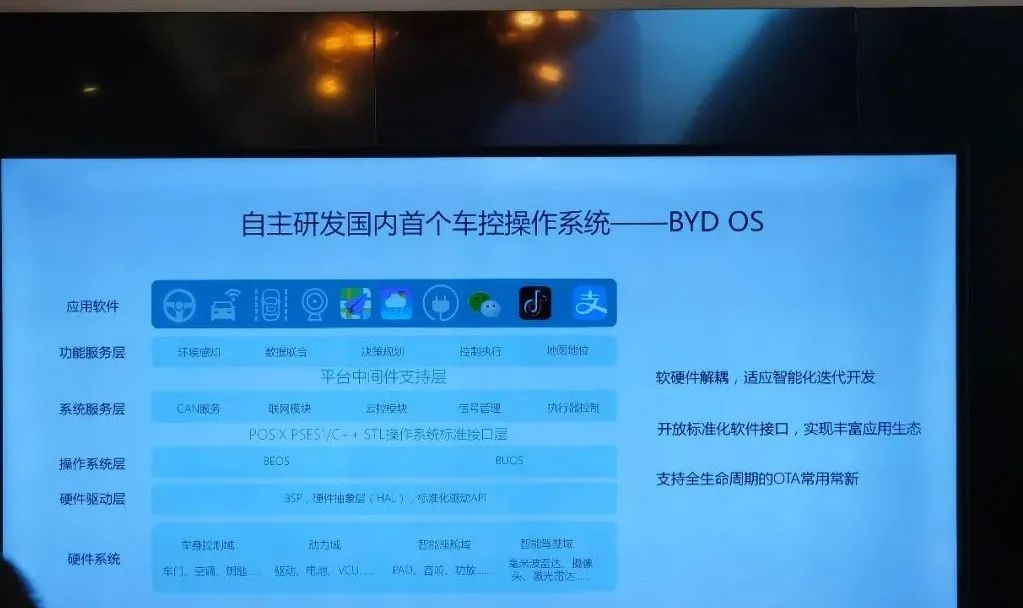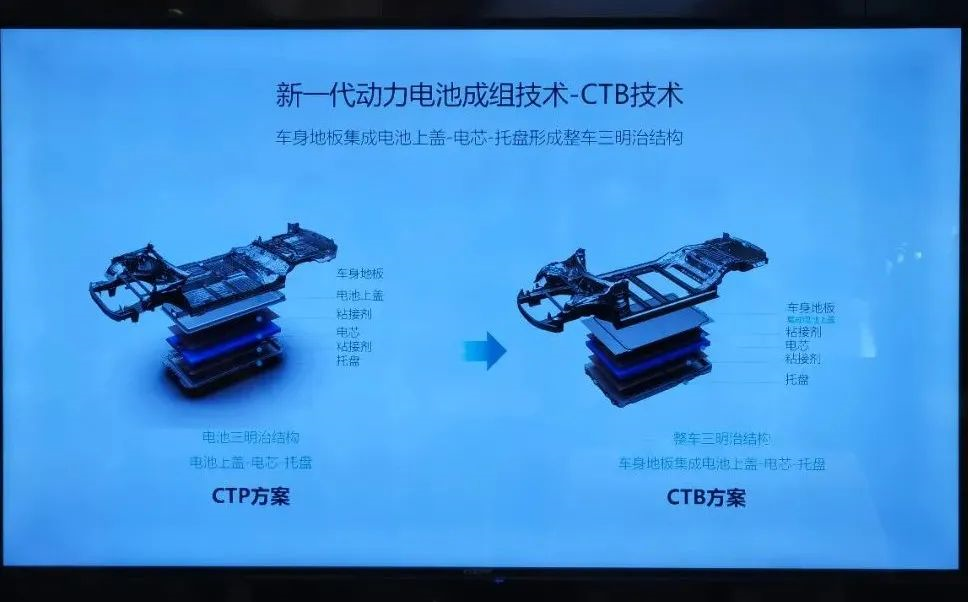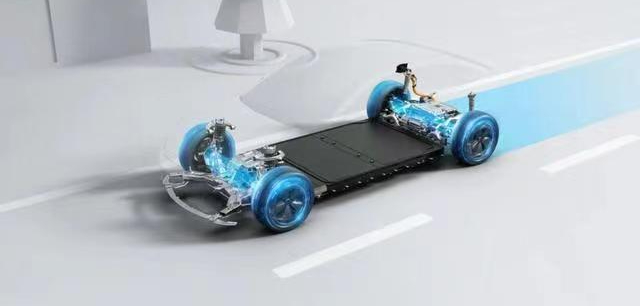Author: Zheng Wen
Editor: Zhou Changxian
BYD’s explosive growth in the new energy market is well-known.
The latest data shows that BYD sold over 200,000 vehicles in September, including 94,900 pure electric models and 106,000 plug-in hybrid models. The cumulative sales of new energy vehicles in the first three quarters of the year reached 1.18 million, an increase of 249.56% year-on-year.
However, this may just be the beginning.

On September 8th last year, BYD released the new generation pure electric architecture “e Platform 3.0”. Based on this platform, three models named Dolphin, Yuan Plus and Sea Lion were launched. Dolphin achieved sales of 126,900 units in the first nine months, Yuan Plus sold a total of 115,600 units, and Sea Lion, which was recently launched, is still on the rise.
As we can see, these three models currently occupy a small proportion of the total sales, which means that the e Platform 3.0 will unleash even greater power in the future.
Next, we will focus on the four major highlights of the e Platform 3.0.
Eight-in-one Electric Drive Unit
From the independent design of the electric drive unit in the 1.0 era to the electric drive and charging and discharging three-in-one in the 2.0 era, BYD’s electric drive unit has evolved into the fully integrated eight-in-one deep integration power module of e Platform 3.0. This breakthrough overcomes the restraint problems of multiple physical fields such as electric-magnetic-thermal-acoustic and integrates the electric drive, charging and discharging, VCU and BMS.Before 2017, there was no integration for electric drive products, and the motor, electric control, and reducer were all packaged as individual products or installed separately. Starting from 2018, integration began with the “two-in-one” configuration of the drive motor and reducer, then developed into the “three-in-one” configuration of the drive motor, reducer, and motor controller. By 2020, the “three-in-one” configuration had become mainstream, with major manufacturers and electric drive suppliers achieving mass production capabilities.
Moving forward, there is a “six-in-one” configuration for the drive assembly system, which combines the “big three-in-one” drive motor assembly system with the “small three-in-one” power supply assembly system. The “big three-in-one” consists of the drive motor assembly, controller assembly, and transmission assembly, while the “small three-in-one” consists of OBC (onboard charger), PDU (power distribution unit), and DC/DC converter (direct current/direct current conversion).
A further integration is the domain controller scheme, such as BYD’s “eight-in-one,” which is a power domain controller scheme that integrates BMS (battery management system) and VCU (vehicle control unit) on top of the “six-in-one” configuration.
The assembly includes the drive assembly (motor and transmission), motor controller, PDU, DC/DC, OBC, VCU, and BMS. This can make the system 40kg lighter than the e-platform 1.0 version and save 37L in space.
Deep integration of power components can effectively reduce system weight and volume, reduce space usage, and lower losses. At the same time, it reduces system components to improve NVH (noise, vibration, and harshness) performance.
The eight-in-one electric power assembly system installed on the Dolphin model has a peak motor power of 230KW, a peak torque of 360N·m, and a four-wheel drive version with 0-100km/h acceleration time of 3.8 seconds.
BYD OS Vehicle Operating System: Adopting Intelligent Domain Controller Architecture and Self-Developed Operating SystemTo solve the problems of low computing power, low efficiency, and difficult collaboration caused by distributed automotive electrical architecture, BYD’s e-platform 3.0 has centralized the vehicle body into four domain controllers, thereby improving system interaction efficiency. They are: Intelligent Power Domain, Intelligent Vehicle Control Domain, Intelligent Cabin Domain, and Intelligent Driving Domain.
Intelligent Power Domain: integrates modules such as VCU (vehicle control unit), BMS (battery management system), MCU (microcontroller unit), OBC (on-board charger), and DC-DC converter.

Intelligent Vehicle Control Domain: integrates multiple modules such as BCM (body control module), security gateway, key center, air conditioning control, tire pressure monitoring, instrument control, parking assistance, and intelligent keys. The extended version supports up to 32 distributed ECU (electronic control unit) functions.
Intelligent Cabin Domain: integrates user voice, touch, perception, health, display screen, and other functions.
Intelligent Driving Domain: integrates functions such as autonomous driving, ACC (adaptive cruise control), AEB (automatic braking system), LSS (intelligent safety system), BSD (blind spot monitoring system), and APA (automatic parking).
From a single ECU with a single function, the system has transformed into a multi-core CPU domain controller with stronger processing capabilities that controls multiple functions. The high-integration domain control architecture, deep integration of similar functional modules, and regional control have shortened the interaction response time and dramatically improved computing power.

The vehicle control operating system is the bridge between the underlying hardware and users, which needs to integrate various types of software applications and adapt to the centralized automotive electrical architecture, and is the key to the digital transformation of automobiles.
This operating system solves the performance problems of existing systems by using two major technologies: deterministic latency engine and high-performance IPC.
Optimized Blade Battery Pack Design
In the development of pure electric vehicles, the relationship between the battery and the vehicle body has always been a problem explored by engineers. From directly installing batteries on fuel vehicles, to flattening the battery pack’s design, and then to platforms designed specifically for pure electric vehicles, the improvement of power battery structure has been evolving.
In 2020, BYD introduced blade battery technology, greatly improving the safety of power batteries. The e-platform 3.0 further optimized the blade battery pack design, making it truly a part of the chassis.
BYD’s CTB technology is based on CTP, which highly integrates the vehicle body and battery system, and evolves from the battery sandwich structure of CTP to the vehicle sandwich structure of CTB. This increases the volume utilization rate to 66%, and integrates the power battery system as a fusion of energy and structural components, simplifying the vehicle body structure and production process.

BYD has redesigned the exclusive force transmission path for pure electric vehicle models. When encountering collisions, the collision force will be transmitted through a specific path rather than acting on the battery pack. The floor (cell top cover)-cell-tray are integrated with the vehicle body to form a high-strength “whole vehicle sandwich” structure. The blade battery is both an energy body and a structural component, becoming part of the vehicle body load transfer and energy absorption structure. The vehicle body structure will become stronger, but the requirements for thermal management will rise.
One positive verification is that, taking sea lions as an example, the structural safety of head on collision has been improved by 50%, and the structural safety of side collision has been improved by 45%. After optimizing the vehicle body structure, the sea lion was able to pass the elk test at a speed of 83.5km/h, the single-line test at a speed of 133km/h, and the maximum lateral stable acceleration was 1.05g.
Support for 800V Voltage Platform
In terms of high voltage platforms, the first to adopt 800V voltage platform was Porsche Taycan, which was launched in 2019. In pursuit of charging speed and sustained performance, Taycan mass produced the 800V voltage platform, which can charge from 5% to 80% in 30 minutes.
In China, BYD is one of the earlier companies to lay out related technologies. BYD has equipped its self-developed SiC power devices on its Han EV. In mid-July, the Alpha S HI version of the MEET FOX with the 800V high-voltage fast charging platform was put into production, and in September, the XPeng G9 equipped with 800V high-voltage fast charging went on sale.
In fact, more and more OEMs have begun to take 800V seriously, with plans from BYD, XPeng, MEET FOX, Hyundai, Great Wall, GAC, Kepler, Voyah, EA, and Changan.
In Volkswagen’s understanding, the 800V system is a fast charging system, but in fact, the high voltage system contains many components. The pressure resistance, loss, and heat resistance of the three core electrical components and power devices are higher.
All components of the high-voltage system must be designed and developed according to corresponding voltage levels. From battery packs, motors, air conditioners, chargers, DC/DC, high-voltage connectors and other components, they all need to support 800V and related wiring harnesses.
Taking power semiconductors as an example.
 As an important component of the power system, SiC with high current density and high efficiency is recognized as a new generation of excellent power control chips that contributes to enhancing energy efficiency. SiC power devices are matched with 800V components, which have higher efficiency than IGBT and can be combined with the voltage resistance of the 800V platform.
As an important component of the power system, SiC with high current density and high efficiency is recognized as a new generation of excellent power control chips that contributes to enhancing energy efficiency. SiC power devices are matched with 800V components, which have higher efficiency than IGBT and can be combined with the voltage resistance of the 800V platform.
The E-platform 3.0 has overcome the difficulty of reliable packaging for high power density SiC chips and successfully developed the world’s first mass-produced SiC power module controller. The SiC power module is fully self-designed, packaged, and manufactured, boasting complete independent intellectual property rights.
The high-performance SiC motor controller mounted on the E-platform 3.0 electric drive system has a specification of 1200V-840A, with high efficiency, high voltage resistance, and strong overcurrent capability. Compared with traditional IGBT controllers, SiC power control switch losses are reduced by more than 70%, with a maximum efficiency of 99.7%. The peak power of SiC power control can reach over 230 kW, and the power density can be increased by nearly three times.
However, overall, it will take a considerable amount of time for 800V to be widely applied in the market.
In conclusion, BYD stated that the E-platform 3.0 aims to provide the industry with the next-generation intelligent electric vehicle basic solution, and become the “birthplace” of the next generation of electric vehicles.
From the above four highlights, the emergence of this platform not only signifies some of BYD’s technological choices but is also a concentrated reflection of the industry’s development trend.
This article is a translation by ChatGPT of a Chinese report from 42HOW. If you have any questions about it, please email bd@42how.com.
